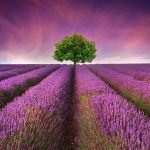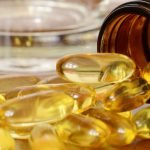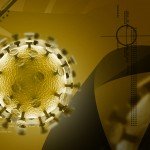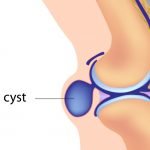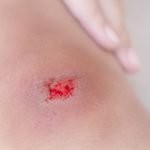Looking More Closely at Andrographis paniculata
Robin DiPasquale, ND, AHG(RH)
Andrographis paniculata is a lanky-growing plant in the Acanthaceae family with small white flowers; the flowers are covered with fine hairs and are splashed with purple on the petals. Native to India, although used in many other places in Southeast Asia, Andrographis in Sanskrit is called Bhunimba, in Hindi Kalmegh, and in other regional languages varying other names, but everyone calls it the king of bitters. Andrographis is very bitter to taste, which gives this plant many of its medicinal properties but makes it tricky to administer, especially as an infusion. This plant loves warmth and thrived in the garden last summer in Wisconsin, yielding a bumper crop. The upper part of the plant is used for medicine, harvested during the flowering stage, although some literature refers to the use of the root as well.
The isolated bitter diterpenoid lactones, andrographolides, have shown medicinal activity in research. The whole plant, either powdered, water extracted, or ethanol extracted, may be more effective because it contains all the medicinal compounds in synergy. Andrographis has many medicinal actions. It is a bitter, which can be used in small quantities to enhance digestion. In larger quantities, the bitter principles bring hepatoprotective action and act as a choleretic, to get bile production moving in the liver. Andrographis promotes antioxidant and inflammation–modulating activities; it is antipyretic and an adaptogen. Regarding the action of Andrographis on the immune system, most of the literature discusses its immunostimulating activity; however, there seems to be a place for this herb in autoimmune conditions, which would point to immunomodulation.
Antibacterial and Antiviral Effects
I met this herbal ally many years ago, when I was introduced to its ability to interrupt or shorten a respiratory tract infection, including rhinitis, otitis, bronchitis, and sinusitis. I have always used the encapsulated or tablet form simply because there was increased compliance with dosing because of its very bitter taste. One of my favorite combinations is Andrographis, Ocimum sanctum, and Echinacea. In a study1 of the common cold, 158 adults were given Andrographis standardized preparation SHA-10 (1200 mg/d) for 5 days. The outcome was an overall decrease in symptoms more quickly and more effectively than placebo, with no adverse effects.
A 1961 study2 in the Indian Journal of Medical Research showed antibacterial, antitubercular, and antifungal action of Andrographis. Traditionally, Andrographis has been used as an antimicrobial herb; however, it is unclear whether it works primarily as an antimicrobial agent or through stimulation of the immune system. One study3 in 2005 showed antibacterial activity against gram-positive Staphylococcus aureus, methicillin-resistant S aureus, and gram-negative Pseudomonas aeruginosa but not Escherichia coli or Klebsiella pneumoniae. Inhibition of herpesvirus 1 was shown using the diterpenes of Andrographis in another 2005 study.4
Parasites
The very bitter nature of Andrographis makes it a candidate for treatment against the overgrowth of parasitic organisms, especially in the gastrointestinal tract. Few studies have evaluated this action. One study5 included Andrographis among other indigenous plants of India in screening for Ascaris lumbricoides, showing effectiveness. A second study6 researched Andrographis activity against roundworms and threadworms, with effective outcomes.
In a different area of the parasitic category, it is important to look at Andrographis as an antimalarial agent. Several studies7-10 have assessed the antiprotozoal and antimalarial activity of Andrographis, showing effectiveness alone and in combination with other herbs. Taking this thread one step more, Andrographis is an herb that should be considered as part of the treatment in cases of Lyme disease. Stephen Harrod Buhner points out that “clinical trials and studies have found Andrographis to be active against a wide range of parasitical organisms: Plasmodium spp (malaria), Leishmaniana spp (leishmaniasis), Wuchereria bancrofti and Brugia malayi (filariasis/nematodes), Ascaris lumbriocoides (human round worm), Dipetalonemia reconditum (canine parasitic worm), and leptospira spirochetes (Leptospirosis). Many of these are like Lyme, vector-born diseases.”11(p79)
Hepatoprotective Action
Evaluation of the hepatoprotective action of Andrographis has been one of the most studied areas in the literature. Knowing its bitter properties, this is no surprise to anyone. It acts as a choleretic and cholagogue and enhances the liver detoxification pathways. There is study after study of toxic induction on animals (I am not sure why we think this is OK), showing protective effects. Two studies12,13 have shown its effectiveness to be greater than that of silymarin. Andrographis has been shown to decrease liver enzymes, lipid peroxidation, and overall oxidative damage to hepatocytes.
Cardiovascular Effects
Being highly inflammation-modulating and antioxidant,14 Andrographis has beneficial effects on the cardiovascular system. As an inflammation modulator, it decreases nitric oxide, tumor necrosis factor 2, prostaglandin E2 synthesis, and lipid peroxidase.15 It also seems to work through relaxation of the vascular smooth muscle, decreasing systolic blood pressure, giving a hypotensive effect.16 The inhibition of platelet-activating factor–induced platelet aggregation has been studied often.17 In one human study,18 A paniculata inhibited ex vivo adenosine diphosphate–induced platelet aggregation in 63 patients with cardiac and cerebral vascular disease. The effects were noted 3 hours after administration.
Autoimmune Effects
The immune-stimulating effects of Andrographis can be attributed in part to increased phagocytosis. It has been shown to have both antigen-specific and nonspecific immune responses.
A question remains about the ability of this plant to modulate the immune system. In Unani Tibb Medicine, Andrographis was used for digestive concerns. It was considered a gastric and liver tonic, a carminative, and an aperient, both emollient and astringent.
Based on my clinical observations of the use of Andrographis as part of the protocol in autoimmune conditions, I postulate that the use of this herb is 2-fold. The first use is as the traditional Unani Tibb Medicine described it, for digestive concerns to repair and recover the gastric mucosal lining. In these actions, inflammation of the gut mucosa can be quelled and repaired. In Traditional Chinese Medicine, Andrographis removes “pathogenic heat” from the blood, seemingly a result of the inflammatory process.
The second use is to quiet the immune response to entering antigens from a leaky gut and to abate the molecular mimicry that can result. I have seen with many patients a positive clinical outcome in the reduction of both gut symptoms and the individual autoimmune reactivity with the use of Andrographis over a 3-month to 12-month period.
Cancer
I had not been thinking about the use of Andrographis in the treatment for cancer until one of the patients I work with came in and told me she had begun to use this herb preventively. Upon further study of the role of Andrographis in treating cancer, I discovered articles documenting increased tumor necrosis factor and natural killer cell function in late-stage cancers19 and antiangiogenic activity,20 enhancing apoptosis21 and inhibiting vascular endothelial growth factor levels.22 Because the patient who brought forth this idea during one of our appointments is a breast cancer survivor, several articles were of significance. Kumar et al23 performed in vitro and in vivo studies in mice, showing inhibition of breast cancer cell proliferation through downregulation of P13 kinase/Akt activation and inhibition in expression of the proangiogenic molecules osteopontin and vascular endothelial growth factor. Two further studies,24,25 from 2010 and 2007, respectively, also reported antitumor activity directly against breast cancer. The outcomes presented in these articles that show promising application of Andrographis to cancer, and in particular breast cancer, leave us with hopeful clinical potential. Recognize that the details involving the preparation of Andrographis, whole plant vs isolated constituent extraction, as well as the extrapolation from animal models to humans, call us to continue to inquire further. We must implement practice with the healing powers of our plants and apply them to each patient individually, not losing sight of seeking the cause of disease.
Conclusion
Whether we are learning our plant knowledge from current “evidence-based” literature, from the traditional knowledge of the many cultures over time, from our clinical practice and experience with each patient we are blessed to witness, or from our own deeper intuitive knowing, plants are a foundation of healing. Without them, we would be unable to exist on this planet. Without them, we would lose our best allies in healing. So, when you work with a plant, any plant, continue to look more closely. Use all your senses, listen to what they have to teach you, and bring that forth in your own unique way as a healer.
 Robin DiPasquale, ND, AHG(RH) is a doctor of naturopathic medicine and a registered herbalist and has been working in the healing arts for 30 years. Using naturopathic principles, she supports patients along their healing journey, on the physical, mental, emotional, and spiritual levels. Serving as the chair of botanical medicine for 8 years, Dr DiPasquale has been a faculty member at Bastyr University (Kenmore, Washington) since 1995, teaching homeopathy and herbal medicine, supervising clinical training for naturopathic students, and currently continuing as an adjunct faculty member in botanical medicine. She has a passion for herbal medicine, with a special interest in gemmotherapy, and teaches gemmotherapy courses online. In the area of botanical medicine, she is published nationally and internationally and teaches throughout the United States, Canada, and Italy. Now living in Madison, Wisconsin, Dr DiPasquale has a naturopathic family practice at Red Lotus Healing Arts, works with patients at the University of Wisconsin integrative medicine clinic, and is a consultant and teacher for the UW integrative medicine fellowship.
Robin DiPasquale, ND, AHG(RH) is a doctor of naturopathic medicine and a registered herbalist and has been working in the healing arts for 30 years. Using naturopathic principles, she supports patients along their healing journey, on the physical, mental, emotional, and spiritual levels. Serving as the chair of botanical medicine for 8 years, Dr DiPasquale has been a faculty member at Bastyr University (Kenmore, Washington) since 1995, teaching homeopathy and herbal medicine, supervising clinical training for naturopathic students, and currently continuing as an adjunct faculty member in botanical medicine. She has a passion for herbal medicine, with a special interest in gemmotherapy, and teaches gemmotherapy courses online. In the area of botanical medicine, she is published nationally and internationally and teaches throughout the United States, Canada, and Italy. Now living in Madison, Wisconsin, Dr DiPasquale has a naturopathic family practice at Red Lotus Healing Arts, works with patients at the University of Wisconsin integrative medicine clinic, and is a consultant and teacher for the UW integrative medicine fellowship.
References
- Cáceres DD, Hancke JL, Burgos RA, Sandberg F, Wikman GK. Use of visual analogue scale measurements (VAS) to assess the effectiveness of standardized Andrographis paniculata extract SHS-10 in reducing the symptoms of common cold. Phytomedicine. 1999;6:217-223.
- Bhatnagar SS, Santapau H, Desa JD, et al. Biological activity of Indian medicinal plants, I: antibacterial, antitubercular and antifungal action. Indian J Med Res. 1961;49:799-813.
- Zaidan MR, Noor Rain A, Badrul AR, Adlin A, Norazah A, Zakiah I. In vitro screening of five local medicinal plants for antibacterial activity using disc diffusion method. Trop Biomed. 2005;22:165-170.
- Wiart C, Kumar K, Yusof MY, Hamimah H, Fauzi ZM, Sulaiman M. Antiviral properties of ent-labdene diterpenes of Andrographis paniculata Nees, inhibitors of herpes simplex virus type 1. Phytother Res. 2005;19:1069-1070.
- Raj RK. Screening of indigenous plants for anthelmintic action against human Ascaris lumbricoides, part II. Indian J Physiol Pharmacol. 1975;19:47-49.
- Dutta A, Sukul NC. Filaricidal properties of a wild herb, Andrographis paniculata. J Helminthol. 1982;56:81-84.
- Najib Nik A, Rahman N, Furuta T, Kojima S, Takane K, Ali Mohd M. Antimalarial activity of extracts of Malaysian medicinal plants. J Ethnopharmacol. 1999;64:249-254.
- Mishra K, Dash AP, Swain BK, Dey N. Anti-malarial activities of Andrographis paniculata and Hedyotis corymbosa extracts and their combination with curcumin. Malar J. 2009;8:e26. http://www.ncbi.nlm.nih.gov/pmc/articles/PMC2650700/. Accessed February 26, 2013.
- Dua VK, Ojha VP, Roy R, et al. Anti-malarial activity of some xanthones isolated from the roots of Andrographis paniculata. J Ethnopharmacol. 2004;95:247-251.
- Dua VK, Verma G, Dash AP. In vitro antiprotozoal activity of some xanthones isolated from the roots of Andrographis paniculata. Phytother Res. 2009;23:126-128.
- Buhner SH. Healing Lyme. Silver City, NM: Raven Press; 2005:79.
- Shukla B, Visen K, Patnaik GK, Dhawan BN. Choleretic effects of andrographolide in rats and guinea pigs. Planta Med. 1992;58:146-149.
- Visen PK, Shukla B, Patnaik GK, Dhawan BN. Andrographolides protects rat hepatocytes against paracetamol-induced damage. J Ethnopharmacol. 1993;40:131-136.
- Lin FL, Wu SJ, Lee SC, Ng LT. Antioxidant, antioedema, and analgesic activities of Andrographis paniculata extracts and their active constituent andrographolide. Phytother Res. 2009;23:958-964.
- Das S, Gautam N, Dey SK, Maiti T, Roy S. Oxidative stress in the brain of nicotine-induced toxicity: protective role of Andrographis paniculata Nees and vitamin E. Appl Physiol Nutr Metab. 2009;34:124-135.
- Yoopan N, Thisoda P, Rangkadilok N, et al. Cardiovascular effects of 14-deoxy-11,12-didehydroandrographolide and Andrographis paniculata extracts. Planta Med. 2007;73:503-511.
- Thisoda P, Rangkadilok N, Pholphana N, Worasuttayangkurn L, Ruchirawat S, Satayavivad J. Inhibitory effect of Andrographis paniculata extract and its active diterpenoids on platelet aggregation. Eur J Pharmacol. 2006;553:39-45.
- Zhang YZ, Tang JZ, Zhang YJ. Study of Andrographis paniculata extract on antiplatelet aggregation and release reaction and its mechanism [in Chinese]. Zhongguo Zhong Xi Yi Jie He Za Zhi. 1994;14:28-35.
- See D, Mason S, Roshan R. Increased tumor necrosis factor alpha (TNF-alpha) and natural killer cell (NK) function using an integrative approach in late stage cancers. Immunol Invest. 2002;31(2):137-153.
- Sheeja K, Guruvayoorappan C, Kuttan G. Antiangiogenic activity of Andrographis paniculata extract and andrographolide. Int Immunopharmacol. 2007;7:211-221.
- Yang O, Wu D, Luo K, et al. Andrographolide enhances 5-fluorouracil–induced apoptosis via caspase-8–dependent mitochondrial pathway involving p53 participation in hepatocellular carcinoma (SMMC-7721) cells. Cancer Lett. 2009;276:180-188.
- Zhao F, He EQ, Wang L, Liu K. Anti-tumor activities of andrographolide, a diterpene from Andrographis paniculata, by inducing apoptosis and inhibiting VEGF level. J Asian Nat Prod Res. 2008;10:467-473.
- Kumar S, Patil HS, Sharma P, et al. Andrographolide inhibits osteopontin expression and breast tumor growth through down regulation of P13 kinase/Akt signaling pathway. Curr Mol Med. 2012;12(8):952-966.
- Menon V, Bhat S. Anticancer activity of andrographolide semisynthetic derivatives. Nat Prod Commun. 2010;5(5):717-720.
- Sukardiman H, Widyawaruyanti A, Sismindari, Zaini NC. Apoptosis inducing effect of andrographolide on TD-47 human breast cancer cell line. Afr J Tradit Complement Altern Med. 2007;4(3):345-351.




